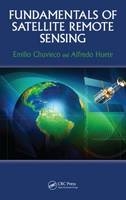
Fundamentals of Satellite Remote Sensing
Taylor & Francis Ltd (Verlag)
978-0-415-31084-0 (ISBN)
- Titel erscheint in neuer Auflage
- Artikel merken
An extensive review of remote sensing principles with an emphasis on environmental applications, Fundamentals of Satellite Remote Sensing discusses a wide range of topics, from physical principles to data acquisition systems and on to visual and digital interpretation techniques. The text focuses on the interpretation and analysis of remote sensing images and how they improve our understanding of environmental processes and their interaction with human activities.
The authors discuss new interpretation approaches, including hyperspectral analysis, high-spatial resolution data, and radiative transfer models. The presentation includes an analysis of accuracy assessment methods and demonstrates how to integrate remote sensing results with geographic information systems. It also covers recent missions, such as Terra-Aqua, Envisat, Ikonos-Quickbird-Geoeye and SPOT-5, as well as LIDAR and interpherometric radar.
The discussion of visual criteria to extract interpretation from satellite images emphasizes differences and similarities with conventional photo-interpretation techniques. A chapter on accuracy assessment and the connection between remote sensing and geographic information systems helps readers extend the interpretation of satellite images to a more operational, applications-oriented framework.
Universidad de Alcala, Spain University of Arizona, Tucson, USA
Introduction
Definition and Objectives
Historical Background
International Space Law
Advantages of Space-Based Observations
Sources of Information on Remote Sensing Data and Interpretation Methods
Review Questions
Physical Principles of Remote Sensing
Fundamentals of Remote Sensing Signal
The Electromagnetic Spectrum
Terms and Units of Measurement
Electromagnetic Radiation Laws
Spectral Signatures in the Solar Spectrum
The Thermal Infrared Domain
The Microwave Region
Atmospheric Interactions
Review Questions
Sensors and Remote Sensing Satellites
Types of sensors
Resolution of a Sensor System
Passive Sensors
Active Sensors
Satellite Remote Sensing Missions
Review Questions
Basis for the Interpretation of Remote Sensing Images
Constrains in Using RS Data
Types of Interpretation
Organization of a RS Project
Interpretation Phase
Presentation of Study Cases
Review Questions
Visual Interpretation
Characteristics of Photographic Images
Identification of Geographic Features in the Images
Criteria for Visual Interpretation
Elements of Visual Analysis
Digital Image Processing (I): Enhancements and Corrections
Structure of a Digital Image
Media and Data Organization
Digital Image Processing Equipment
General File Operations
Visual Enhancements
Image Corrections
Digital Image Processing (II): Generation of Thematic Information
Calculation of Continuous Variables
Digital Image Classification
echniques of Multitemporal Analysis
Analysis of Landscape Patterns
Accuracy Assessment
Relevance of Validating Results
Methods to Estimate Accuracy
Sources of Error
Sampling Design
Gathering Information
Measuring Error in Interval-Scale Variables
Measuring Error in Classified Images
Verification of Multitemporal Analysis
Remote Sensing and Geographic Information Systems
The Need of GIS
Trends in GIS and RS Development
Common Technical Requirements
GIS as Input for Remote Sensing Interpretation
Remote Sensing as Input for GIS
Integration of Satellite Images and GIS
References
Appendices
Acronyms used in this textbook
Sources of images
Answers to review questions
| Erscheint lt. Verlag | 1.12.2009 |
|---|---|
| Zusatzinfo | 228 - PPI 496; 32 Tables, black and white; 230 Illustrations, black and white |
| Verlagsort | London |
| Sprache | englisch |
| Maße | 156 x 234 mm |
| Gewicht | 771 g |
| Themenwelt | Naturwissenschaften ► Biologie ► Ökologie / Naturschutz |
| ISBN-10 | 0-415-31084-9 / 0415310849 |
| ISBN-13 | 978-0-415-31084-0 / 9780415310840 |
| Zustand | Neuware |
| Informationen gemäß Produktsicherheitsverordnung (GPSR) | |
| Haben Sie eine Frage zum Produkt? |
aus dem Bereich



